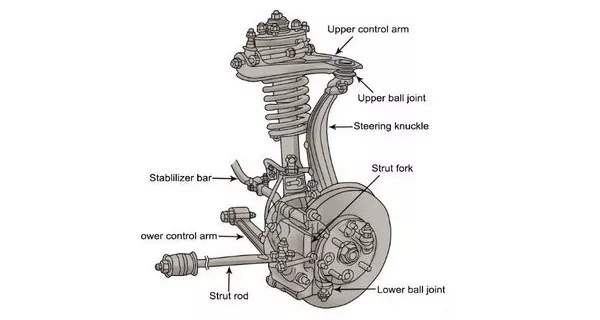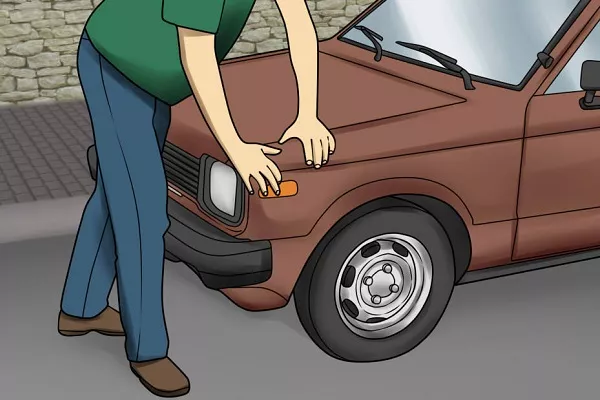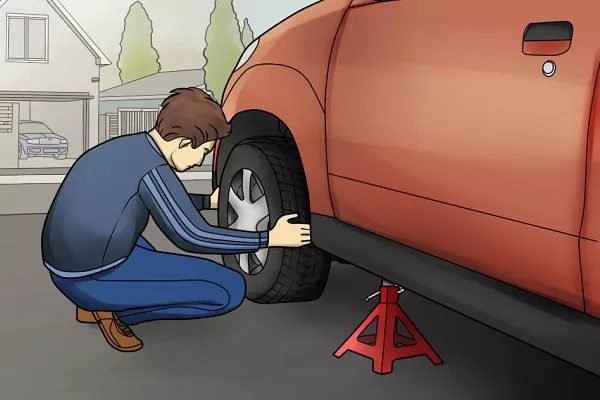Suspension system on the car should be regularly checked by a team of professional technicians when you bring your car to change the oil. However, many experienced drivers could be aware of signs of malfunction of the suspension. In that case, the car will make strange sounds and show other common signs. Here Philkotse.com provides you with some helpful information on how to find faults on your car's suspension system.

The suspension system on the car should be regularly checked by a team of professional technicians
1. Items to check car suspension system
- A flashlight
- A jack
- A pair of gloves
- Lifting tools
- A pair of safety goggles
- Car Ramps
2. Step-by-step guide to troubleshoot car suspension system
Step #1: Test-drive the car.
Take a test drive and pay attention as much as possible to look for any error.

Take a test drive and pay attention as much as possible to look for any error
Lower the car window and try to listen to any noise coming from the car. If the driver hears any strange sound, focus on where they are coming from. Some strange sounds emanating from the suspension of cars such as:
|
Noise
|
Cause
|
|---|---|
|
Sound similar to knocks on the door
|
This sound occurs when there is a strong collision, and it means there are possible issues with the strut rods, strut rod bushing, and ball joints.
|
|
A continuous sound
|
The sound is continuous and gets bigger as the car moves faster. This happens when there is a malfunction in wheel bearings or an issue with the tires.
|
|
A rumbling sound
|
It sounds like there is a strong collision between metal bars, which can be caused by malfunctioning of bolts or broken connector parts.
|
>>> View more: 6 common symtoms of a car's suspension system problems
Step #2: Check the exterior of the car.
When gathering enough information, the driver should drive the car somewhere empty and set up the handbrake system.
Be sure to let the engine cool down 30 minutes after the test drive is enough before starting testing the vehicle. Wear gloves and prepare the necessary items.
Step #3: Press down the car.
Carefully put your hands on the intersection of the hood and mud fender, press firmly on the suspension until the car bounces back. At that time, if the driver sees that the car could bounce back normally, this is a good signal that the strut is still working well. This way, the driver should try to check the struts at the 4 corners to see if they have any trouble.

Carefully put your hands on the intersection of the hood and mud fender, press firmly on the suspension until the car bounces back
Step #4: Lift the car.
Use the jack to lift the corner of the car just enough for tire not touching the ground but still ensuring the car is safe.

Use the jack to lift the corner of the car just enough for tire not touching the ground but still ensuring the car is safe
Step #5: Check the vibration of the wheel.
Hold the tires tightly and start shaking wheels with your hand moving along the direction of 9h-3h and 12h-6h. If there is any unusual movement of the wheel, some parts of the vehicle may have been worn.
Note: Unusual motions can come from a variety of causes, so drivers should check and make accurate judgments.
3. Tips when troubleshooting car suspension system.
#1. The best way is to test-drive a car with a friend who has knowledge of car components. Use a flashlight to check the rear of the wheel to detect faulty parts, and it is best to touch the parts thoroughly. However, be aware of oil stains possibly left on your cloth.

The best way is to test-drive a car with a friend who has knowledge of car components
#2. Drivers should carefully check the tires. Corroded tires cause noise and make the car difficult to control. Therefore, the driver should check them carefully.
#3. If you've found the cause of the fault on the suspension, then bring the car to a garage for the assistance of a professional car maintenance team to repair it in time.
Recent posts
- Suspension modifications for off-road goodness in the Philippines Feb 17, 2021
- 3 Bad Driving Habits That Destroy Your Car’s Suspension Oct 10, 2018
- Suspension modifications for city driving & heavy duty in the Philippines Feb 17, 2021
- Is your car suspension ready for the rainy season in the Philippines? Sep 05, 2018
- 5 easy tips to diagnose your car suspension problems Apr 10, 2018











